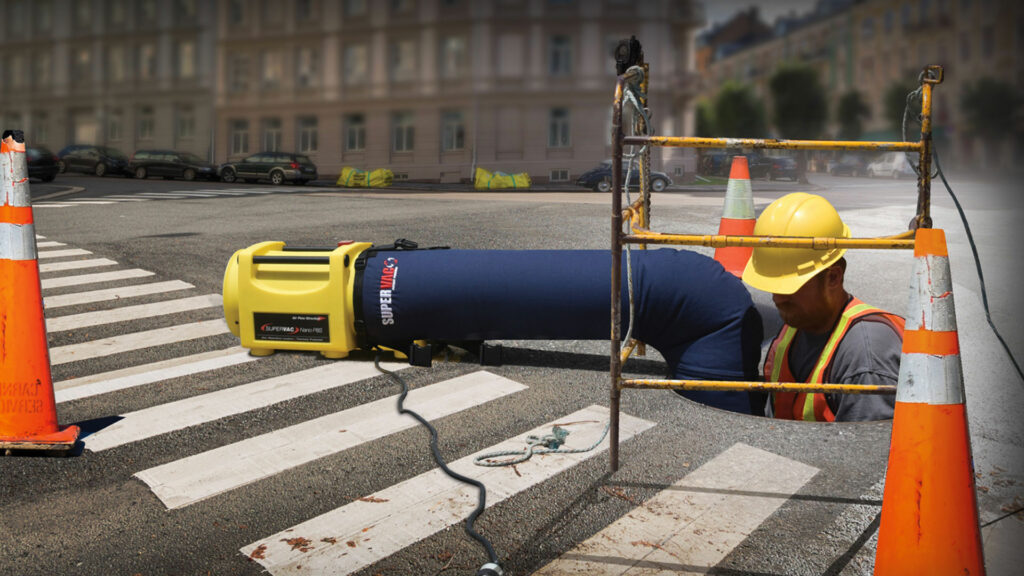
by Tim Johnson
It was supposed to be quick. An internal routine inspection. In and out. Minutes inside the power facility’s empty containment tank. On that day, more than 25 years ago, decisions were made that created a lasting, irreversible impact.
In the world of confined space, it’s the decisions that cost lives.
It all started when two employees at the Colorado power plant facility decided to perform their inspection without the required permit. One employee entered the hatch, while the other monitored progress from outside the door. Minutes passed, and that’s when the latter employee saw his friend collapsed on the vessel floor. Miraculously, the other employee resisted the urge to enter the tank, instead opting to communicate with the rescue team.
Some say it’s a decision that saved at least one life that day.
More decisions followed, and today, the rescue team looks back on each one, wondering what would have happened had they done things differently.
In confined space rescue and ventilation, there’s little time to ponder choices. Instead, teams must rely on best-practice tactics, followed by an abated and hopeful outcome. Here are some steps your rescue team should consider:
CONSULT EXISTING SAFETY PROCEDURES
Many governments regulate confined space work environments, requiring companies to properly inspect and permit the space. Often, these companies will have safety departments and outlined procedures in place. It’s important to consult these procedures prior to entry.
CONTINUOUSLY TEST THE AIR QUALITY
Before entering, ensure that an acceptable level of oxygen exists in the confined space. Testing should occur continuously, or at frequent intervals, during the rescue. The first set of tests should be performed by extending the sensor into the space before anyone enters. Test all levels of the space because vapors have various densities, which create a false “safe” reading. Consult government regulations, but note, an atmosphere that contains less than 19.5% of oxygen is typically considered deficient and may deprive the rescue team of breathable air. Meanwhile, a space containing more than 23.5% of oxygen is enriched and enhances combustible flammability. Even though testing air quality may feel time consuming, it’s one of the most crucial steps to ensure additional lives aren’t risked.
Similarly, rescuers should check the atmosphere’s flammability. Typically, a confined space is hazardous if it contains more than 10% of the Lower Explosive Limit (LEL), while a flammable gas must reach 100% of its LEL to ignite and burn. Monitors are usually calibrated with a flammable gas, such as methane, heptane or pentane. Remember, different gases have different LELs, so a monitor that is calibrated for one gas may give an inaccurate reading for a different gas. A monitor reading of 10% or less of the LEL is typically considered safe. But don’t forget, flammability monitors are only accurate within a specified range of oxygen content. (An oxygen-deficient or oxygen-enriched atmosphere can easily throw a false reading.)
Finally, check for chemical toxicity in the space. If the material in the space is known, use monitors specific to that chemical. These monitors will test the exposure limit, or PEL — the concentration of a toxin that most people can safely be exposed to for eight hours.
VENTILATION OF HAZARDOUS ATMOSPHERES
Forced ventilation is one of the most definitive methods to reduce or eliminate hazardous atmospheres in a confined space. Below is a list of ventilation equipment and considerations rescuers should factor in when using this equipment:
Positive and/or Negative Pressure Ventilation Fans
A variety of confined-space electric fans exist on the market. These fans vary by size, output, design and motor type (pneumatic, single speed, single high speed and variable speed fan). Among some of the smallest fans, you’ll find the 8” Nano, or rescuers can opt for more airflow with a 24” fan blade. When using a fan, consider the following:
- Before using the fan, identify any tainted vapors in the ambient air outside of the confined space. You may find that an outside air source contributed to the confined space’s hazardous environment in the first place. Be careful not to set up ventilation too close to machinery, equipment or work processes that produce harmful vapors.
- Remember, a fan with an explosion proof rated motor must be used in areas that may contain a potential flammable atmosphere.
- Evaluate a backup power source for your fan, as well as an emergency evacuation plan, before egress. If there is an interruption of power, conditions inside the space can become unacceptable for crews in a hurry.
- When ventilation is set up, it must move air throughout the space. Depending on the contour of the space, pockets of dead air can exist. There are many methods to ensure proper air flow. Gas stratification within a space may require additional fan deployment, as well as multiple points and levels of monitoring airflow during entry.
Spiral Ducts, L-Shaped Ducts and Hazardous Location Ducts
A number of ducts exist on the market to help move large quantities of air into hard-to-reach places using positive pressure. Some are designed with static-dissipating materials for explosive environments, and similarly, Super Vac has introduced a new inherently arc- and flame- resistant ballistic fabric duct. Meanwhile, L-shaped ducts allow for egress into manholes without having to shut off air supply. When using a duct, remember:
- Care should be taken to reduce static energy during the ventilation process, especially in flammable spaces. Air moving through fibers can create static moving through the duct.
In the end, the importance of identifying and mitigating confined space hazards can’t be overemphasized. The proper use of specialized tools, such as atmospheric monitors and ventilation equipment, combined with proper procedures, can make a life-or-death difference. Without isolating the hazards, rescue can become recovery and rescuers can become victims.
Remember, every decision has a lasting impact, and no matter the outcome, you’ll find yourself reflecting. What if …
Tim Johnson has served the municipal/industrial fire services for more than 30 years, including a stint as the Platte River Power Authority Assistant Chief. Tim continues to be involved with municipal, industrial and military training with a focus on OSHA confined space entry programs. As the lead instructor for Midwest Fire Training Associates for 14 years, he was instrumental in developing course curriculum, including the Train the Trainer program, and holds a number of certifications in rescue standards. He is a 22-year member of the TEEX Municipal Fire School. As an expert in confined space ventilation, he works with a number of organizations to develop their confined space rescue teams.
